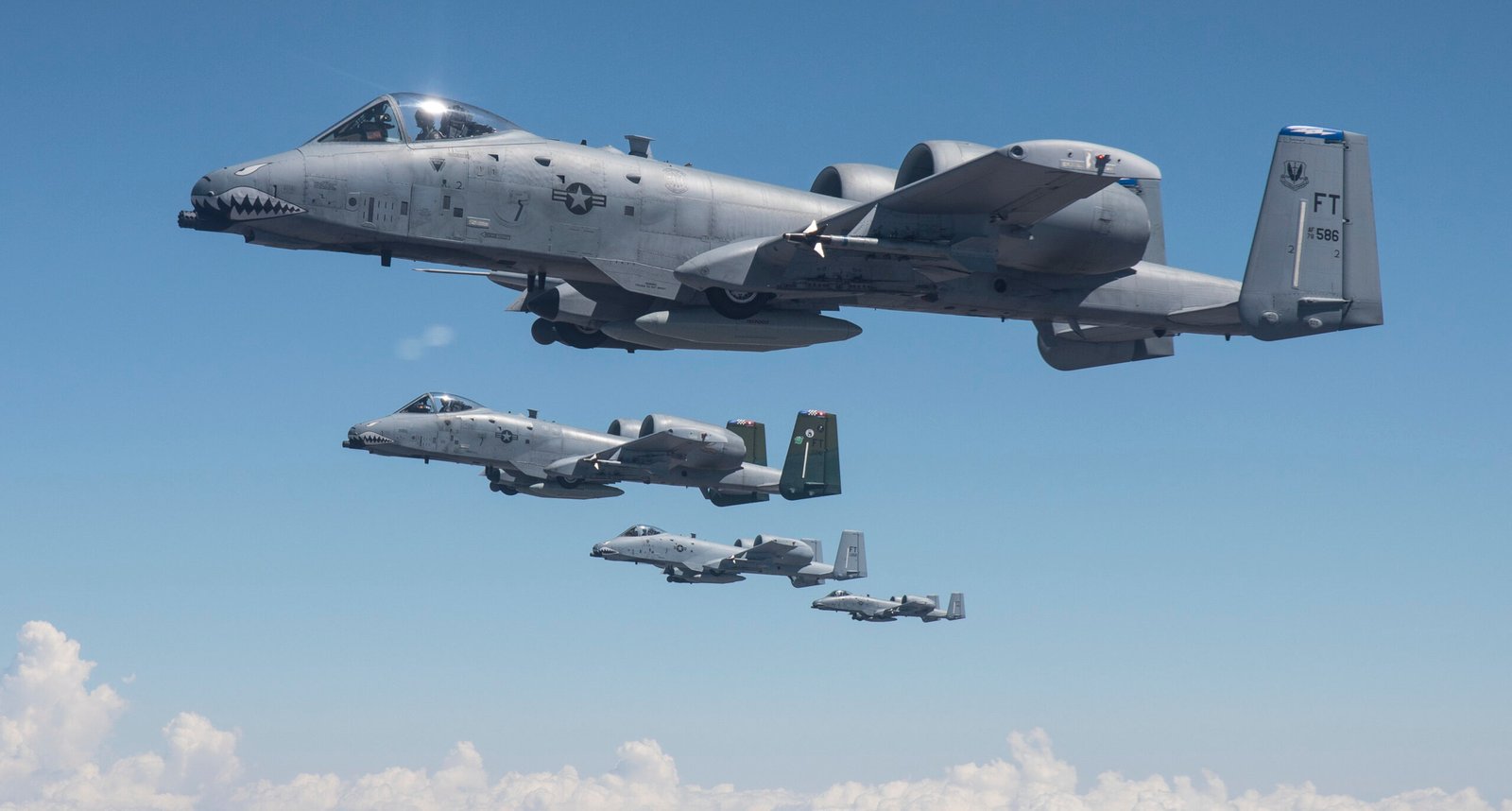Two military bases in Georgia are under partial evacuation orders after Hurricane Helene knocked power and water out on both installations, damage which officials say could take at least a week to remedy. Commanders at Moody Air Force Base near Valdosta, Georgia, and the Army’s Fort Eisenhower near Augusta, Georgia gave the go-ahead Monday for thousands of troops to leave the region while power and water are widely out.
A third base in Helene’s path, MacDill Air Force Base in Tampa, Florida, also remains closed but appears to have escaped the storm’s more drastic damage and has begun to rescind similar evacuation orders issued to troops before the storm arrived. MacDill is a coastal base on the Gulf of Mexico
The Moody and Eisenhower evacuation orders are not mandatory instructions for airmen and soldiers to leave the bases, which are already mostly closed to daily operations. Moody troops are even under an emergency curfew as rescue efforts continue and recovery gets underway.
Rather, the order triggers rules to allow families whose homes are damaged to leave town and be fully reimbursed for travel expenses.
So-called ‘essential” personnel are exempt from the orders at both bases and are expected to be at work. Families of those ‘essential’ personnel can evacuate with full reimbursement.
Moody Air Force Base
The base commander at Moody, Colonel Paul Sheets, issued an order on Monday that authorizes a limited evacuation for troops whose homes are uninhabitable. Under the terms of the order posted on Moody’s Facebook page, a home is considered ‘uninhabitable’ if it is without water or sewer service, has suffered major structural damage, or if a home has no power while a family member living here has a serious medical condition, including women late in pregnancy.
According to the posted memo, those who can leave are authorized to travel 300 miles or 6 hours by car, far enough to reach largely unaffected places like Pensacola or Orlando, Florida or much of South Carolina. Most expenses for those who leave will be reimbursed, including lodging, food, and mileage traveled.
Troops are not authorized to travel by plane, but can families can be re-imbursed for the expenses of two cars.
Calls to several on-base numbers Monday evening were not answered, with some cutting off. About 5,500 active duty troops are stationed at Moody, which is home to A-10 fighter squadrons and a search and rescue group of HC-130J tankers, HH-60 helicopters and Pararescue operators. It was unclear Monday if those rescue forces would be called for hurricane relief efforts, which has occurred in the past.
Moody is just outside Valdosta, which sits 60 miles north of Perry, Florida, where Helene made landfall as a Category 4 hurricane. The track Helene followed passed directly over Valdosta, where damage is widespread.
The storm knocked out power and water on the base and across the region, including in the off-base residences of thousands of Moody families. The base has been closed to non-essential personnel since the storm hit with minimum manning at gates and other essential offices, base officials have said. The base is under a curfew of 5 p.m. to 9 a.m., hours closely matched to curfews in the surrounding county.
Fort Eisenhower
The Fort Eisenhower base commander, Major General Ryan Janovic, put the base under a “voluntary evacuation” plan Monday, according to a release on the base’s Facebook page and copies of the order circulating on social media. The plan applies to most troops stationed there, but not to students at the various technical schools that train new soldiers on cyber warfare. About 600 students are set to graduate this week from initial cyber training, base officials say. An incoming class has already been delayed.
Under the order, personnel at Fort Eisenhower can travel 500 miles, a radius far enough to reach Columbus, Ohio or Washington, D.C. Like the Moody order, the Eisenhower evacuation applies only to non-essential positions, though it does not appear to require specific damage to a home but rather general hardship and damage.
The Eisenhower order gave no specific end date, noting it was in effect until rescinded.
About 18,000 active duty troops are stationed at the base, not counting trainees at its schools. The base is home to a number of signal and intelligence units, along with the Cyber Center for Excellence.
As Eisenhower and Moody deal with hurricane fallout, two bases just outside Helene’s path are returning to normal operations.
MacDill Air Force Base
Though controlled by the Air Force, MacDill is home to hundreds of troops from every service as the home of the U.S. Special Operations Command. Situated inside Tampa Bay on the Gulf of Mexico, the base and its surrounding counties have long-established hurricane protocols.
MacDill base commander Col. Ed Szczepanik ordered a limited evacution of the base on Wednesday, Sept. 15, the day before Helene arrived, under terms similar to those on Moody and Eisenhower. However, those evacuations were being lifted early this week. Only nearby Pasco County residents were still under evacuation on Monday. The base is open for normal operations though the BX and Commisary were still closed Monday.
Tyndall Air Force Base
The Gulf Coast base on the Florida panhandle is no stranger to hurricane damage. in 2018, Hurricane Michael roared directly over the base, leveling hangars on its flight line and buildings around the base. At least 17 F-22 Raptor fighter jets stationed there were unable to fly out before the storm and at least 4 were damaged. The Air Force spent $5 billion rebuilding the base in recent years.
But the base, which is home to both F-35s and F-22s, took just a glancing blow from Helene. Some services on base remained closed or in limited hours Monday but no evacuation was ordered and base authorities declared the installation “all clear” on September 27.

